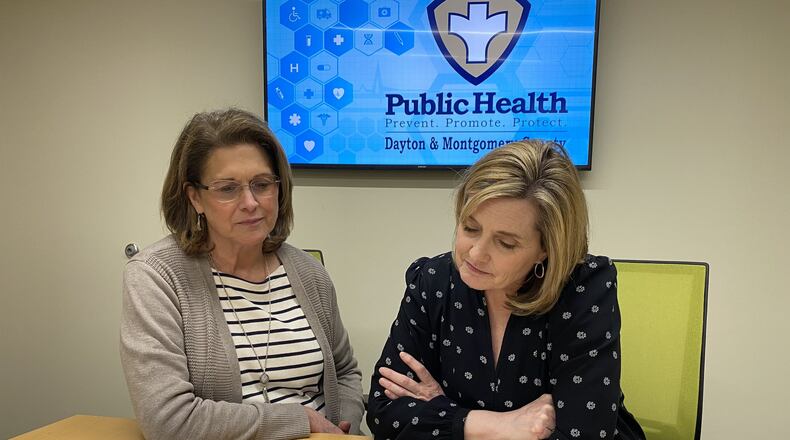Health students, school nurses, and sanitarians who normally do restaurant inspections have all been chipping on the intensive local effort to keep people safe.
MORE: Couple’s stimulus challenge helps nonprofits in the region
Contact tracing is a foundational, go-to tool when trying to contain an outbreak. Because people who get sick have to get sick from someone, so you can slow the spread of an outbreak if sick people isolate, if the rest of the household quarantines, and if their recent contacts know they had been exposed to a sick person and need to quarantine.
“Isolation of active cases and quarantine of possible people that have the virus, it’s a system to separate where the virus might be from the people in the community,” said Dr. Michael Dohn, medical director Public Health - Dayton Montgomery County.
While the process isn’t new, the volume is and the stakes are crucial. Epidemics gain momentum when the number of people in an area sick from the outbreak get an even greater number of additional people sick, while outbreaks lose momentum if that chain of transmission can be disrupted by tracing and isolating the sick.
“If the number of people they pass it onto is greater than the number of cases we started with, then we’re going to have an increase in cases … what we would like is the number of cases that we know about to infect and transmit the disease to a fewer number of people,” Dohn said.
A challenge to the disease containment strategy is there haven’t been enough tests for the novel coronavirus to see if close contacts are positive for the virus. If a public health contact tracer let a person know they were exposed to HIV or tuberculosis for example, the exposed person would be able to get tested. This leaves data gaps in crafting the right response to the outbreak, and leaves people uncertain about their own health and what risk they pose to others when they can’t be sure if they are infectious.
Right now, with the limits of testing and data, public health officials like Dohn can’t truly tell if that reproduction ratio of the coronavirus is going down in the area.
“Nobody knows,” Dohn said.
Gov. Mike DeWine announced Friday that the state would be amping up both testing, which will lead to more confirmed people needing contacts traced, and a corresponding partnership with Partners in Health, a global health nonprofit which has resources and experience in contact tracing and DeWine said will be helping the state’s scaling of efforts.
MORE: When will stimulus paper checks be mailed to Ohioans?
A sample form outlining how a COVID-19 case interview goes showed how health officials take detailed and confidential information and walk through possible contacts, from dates and places of any recent medical care received, travel outside the county, places where children to school or daycare, household contacts, and more.
Health officials look at what kind of home situation a person has for isolating in, such as whether they have their own bedroom or own bathroom, which helps with keeping germs from other household members. In one case, health workers worked with the Foodbank and others to arrange for 14 days of groceries for a person who needed help in order to isolate.
“It’s hard. Especially we’re telling people to isolate at home and the close contacts in the home have to self quarantine. That’s OK if you’ve got a house with a couple bedrooms and three baths,” Dohn said. “It’s a little more difficult if everyone is living in an apartment and you’ve got a couple kids sharing a room and one bathroom for everyone. The whole socio-economic divide we see in terms of cases and deaths, which also parallels to the racial inequities as well, it has something to do with resources. It’s just easier for people with more resources to comply with isolation at home.”
Some experts have called for governments making living facilities like unused dorms or hotels available for people with mild cases struggling to isolate at home from household members.
In typical times, public health departments have disease investigation specialists who are certified and completed a CDC training course to do this, Dohn said.
MORE: CT tech serves on the front lines of coronavirus
With COVID-19, the response is large enough that others who are qualified have been called into the tracing effort.
Dohn said the local public health department also has eight Ohio Medical Reserve Corp volunteers working on contact tracing.
Local counties also have mutual aid agreements to help each other.
Dohn said one of the helpers is a MPH/MD student who was arranging to do a rotation her senior year the next academic year in public health.
“When the classes were cancelled I just called and said ‘hey why don’t you come on down now,’” Dohn said.
About the Author
